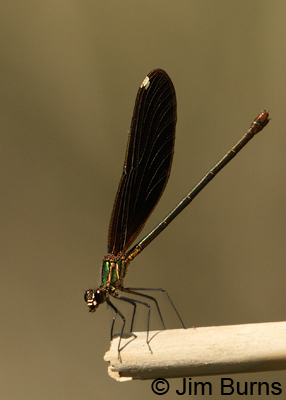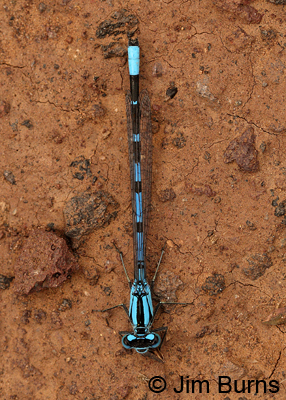
Smoky Rubyspot

Northern Bluet
Last July while waiting at a Common Black-Hawk nest for the parents to bring food to nestlings, a large, colorful dragonfly landed on a stick at minimum focusing distance from my 600mm lens. I snapped one frame and sent it off to my birding friend, Pete Moulton, whom I knew had gone over to the dark side several years before. As I cropped and edited the image I was blown away. This was a huge, wine colored bug, all eyes, with distinct plates on its thorax and distinct segments on its abdomen, beautiful in a Gothic way. Pete identified it as a male Roseate Skimmer, one of Arizona’s largest and most common dragonflies.
I had not so much as glanced at a dragonfly since high school Biology class. Curious, I asked Pete about field guides. It turns out that Dennis Paulson, the retired director of the Slater Museum of Natural History at the University of Puget Sound, had just completed a monumental two volume set, with photographs, detailing the life history of every one of the 450 odd odonates in North America. For those who like full circle stories, Dennis Paulson was the leader of the first organized field trip Deva and I ever took for birds, back in the day when we lived in Seattle.
That Roseate Skimmer was the friendly stranger in the black sedan. Totally seduced, in the ensuing months I’ve tried to figure out why I skipped the butterfly stage, which is where most jaded birders go first, and I think it’s because butterflies are so showy and obvious but dragons, and particularly the smaller, more local and reclusive damsels, are harder to find and even harder to see well. They were here with the dinosaurs and up close and personal they look the part, survivors from an antediluvian world.
Because I’m a visual person I know most people won’t appreciate the incredible diversity of intricate colors and patterns on these relatively small packages unless they see a sharp, frame filling image. My goal with odonate photgraphy, as with the birds, is to spread the faith to those who may have missed some of the mystery and beauty around us. I’m closing in on 100 species now. For a sampler of the odonate world check out this link to what I’ve seen since last July—jimburnsphotos.com/pages/odesspeciesfaves.html. Keep in mind the average damselfly is about 1.2 inches, and the largest dragonfly is only 3.5. I’m spending a lot of time on my hands and knees.
Obsession is a bad thing, but enthrallment is fun. Learning identifying field marks, seasons, and habitats is so humbling, so reminiscent of being a beginning birder. But damsels and dragons are another reason to be outdoors. And it’s a kick.